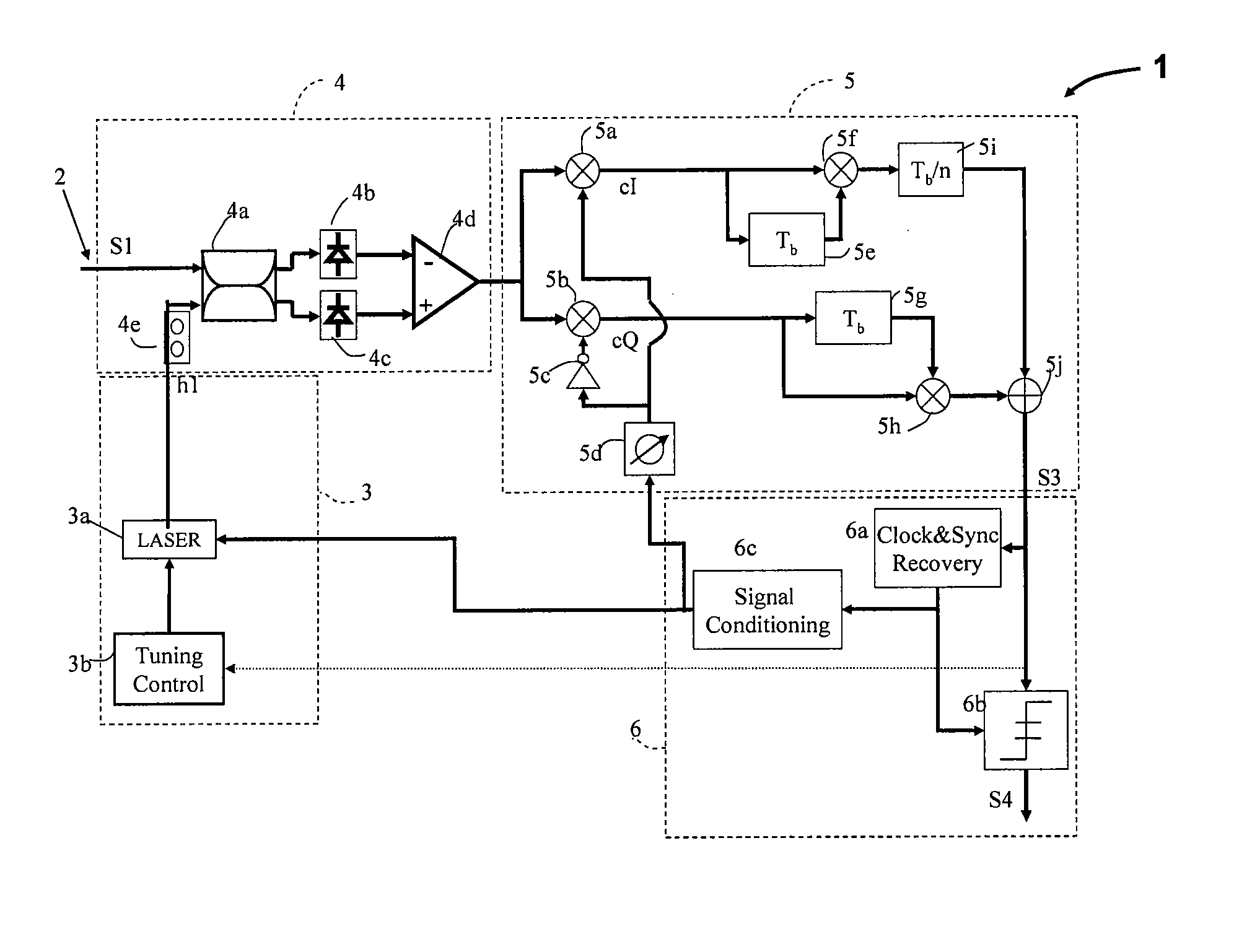Homodyne receiver for optical communications with post processing
a receiver and optical communication technology, applied in electromagnetic receivers, electrical equipment, electromagnetic transmission, etc., can solve the problems of not being able to recover the phase of the optical signal, the disadvantage of high-coherent lasers and optical phase-locked loops, and the noise of unwanted changes of signals, so as to achieve the effect of maximizing the quality of the tun
- Summary
- Abstract
- Description
- Claims
- Application Information
AI Technical Summary
Benefits of technology
Problems solved by technology
Method used
Image
Examples
Embodiment Construction
[0013]The aim of the present invention is to solve the problems above mentioned, in order to make the system more robust and cheap. One of the key features of the invention is the electric post-processing that performs differential demodulation in phase diversity, using the in-phase and quadrature components, that were previously split and are properly combined later again. With this technique, the optical channel tuning does not require a phase matching between the two lasers, and that tuning can be performed by a local laser oscillator and electrical filtering in baseband channel. By this homodyning technique, substantial improvements are achieved in the performance of the optical transmission, such as sensitivity and frequency selectivity of the invented receiver. None of the proposals published earlier, some mentioned before, use this homodyne detection system with differential demodulation; that is not strictly synchronous, but includes its advantages and reduces its requiremen...
PUM
 Login to View More
Login to View More Abstract
Description
Claims
Application Information
 Login to View More
Login to View More - R&D
- Intellectual Property
- Life Sciences
- Materials
- Tech Scout
- Unparalleled Data Quality
- Higher Quality Content
- 60% Fewer Hallucinations
Browse by: Latest US Patents, China's latest patents, Technical Efficacy Thesaurus, Application Domain, Technology Topic, Popular Technical Reports.
© 2025 PatSnap. All rights reserved.Legal|Privacy policy|Modern Slavery Act Transparency Statement|Sitemap|About US| Contact US: help@patsnap.com


